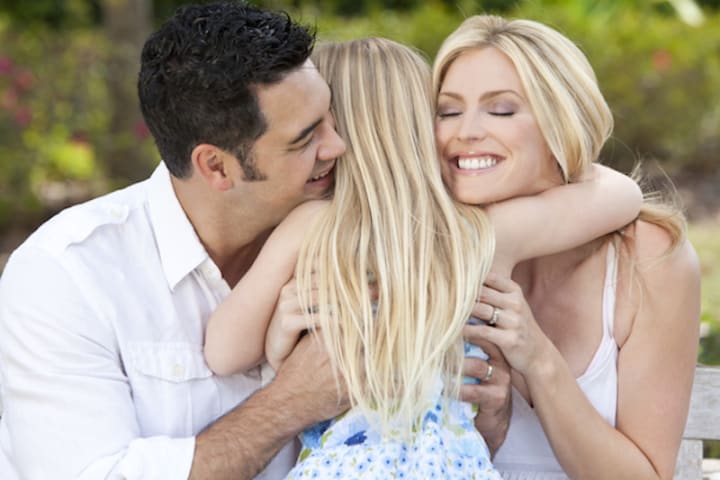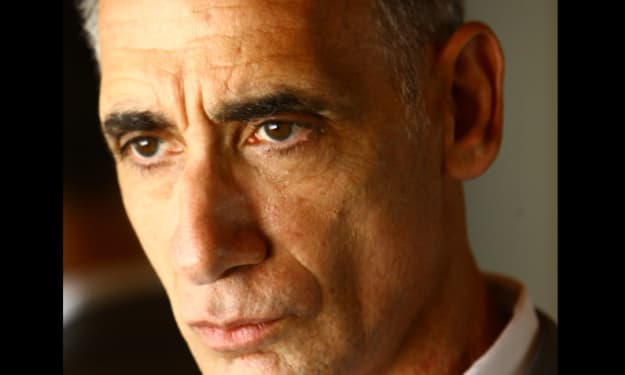Why Kids Movies Should Be Scary
We're not suggesting they go rent the latest horror movie, but there are some advantages to why kids movies should be scary sometimes.

Children's entertainment is often equated with family friendly affairs - safe, fluffy material that neither challenges nor troubles younger audiences. It's not scary. Not frightening. Not nightmare-inducing.
But, the truth is that children's media can be frightening. Everyone has that one movie that frightened them to tears as a child or left a permanent scar on their psyche.
Some moral watchdog groups would argue that these movies are a bad thing. Children, they argue, should be protected from the horrors of the world. Or should they? Perhaps children's media is the best place to terrify kids.
Perhaps kids movies should be scary... sometimes.
A Brief History of Kids and Horror

Children and fear go hand in hand since the beginning of our modern concept of childhood. Many older fairy tales are downright grisly. "Hansel and Gretel" remains one of the most terrifying stories ever written, dealing with cannibalism, torture, and, yes, parental abandonment.
During Christmas time, parents told kids that, if they misbehaved, then a demon known as the Krampus would drag you off to Hell. In Germany, Der Struwwelpeter, an infamous collection of children's stories, taught kids that, if they sucked their thumbs, a madman with a pair of scissors would come to cut off your fingers.
Somewhere around the 20th century, however, things changed. Santa gave kids coal for misbehaving. Walt Disney's version of Cinderella removed the part where the sisters had to carve their feet to fit into the glass slipper. Only Roald Dahl--and even him, arguably--wrote stories in the old tradition, intended to frighten kids. Dahl firmly believed that kids books should be scary, though only a few in the film industry believed that kids movies should be scary.
Yet, as time passed, even these revised stories became "too cruel." Santa giving kids coal became something of a joke. Older Disney films were criticized by some moral watchdogs for being "too scary." Dr. Seuss's edge and wit was substituted with lowest-common-denominator simplicity in the various adaptations of his work. And Roald Dahl? Maybe they saw Willy Wonka or Matilda, but probably not The Witches.
The reason for this? Parents don't want to frighten their kids. A noble effort in theory, but awful in practice.
The Moral Watchdogs

CommonSense Media is one of the most popular moral watchdog sites on the net. On this site, parents can browse all new and old film releases so they can read whether or not the material in the film is acceptable to show your kids. Your kids may say that movie Deadpool is just "another superhero movie like Spider-Man," but doesn't it help to make sure? It is rated R, after all.
That's the thing with films so often. While some kids movies should be scary, scary or intense movies are often advertised to children. Robocop, for example, was marketed to children. They sold action figures in Toys R Us for a movie where the main character gets blown to bloody bits 10 minutes in, where our hero castrates rapists by shooting them in the penis.
The movie Aliens had kids' action figures, too. A ton of kids bought them, so everyone knew what the phallic-headed, chest-bursting aliens looked like from a young age. Keep in mind that when the original Alien was released, fully-grown adults thought the design was too scary to put on screen. Kids can buy these figurines right now for less than twenty dollars!
Many kids in the early 90s were upset when McDonalds halted their line of Batman Returns Happy Meal Toys when the executives actually watched the movie, and realized that their brand couldn't be associated with a film that featured nose biting and sexual perversion.
So yeah, moral watchdog groups sometimes serve a really important purpose. Some parents don't really know what kind of movie they're showing their kids, and may show something a little too frightening for their children. More than they can handle.
Buuuut....
Watchdogs Suffocate Children

The big problem with watchdog groups is that they are too sensitive. When you paint a big brush as to what children can handle, sometimes that means that parents may be scared away by something "too frightening." These are people who do not believe kids movies should be frightening, and make a judgement call based on the information provided.
Let's take a look at CommonSense Media's catalogue of reviews. Just to see what is deemed "too scary" for children. The higher the number, the more intense it is.
Frozen. Gets a two out of five. Smurfs has the same rating,
Beauty and the Beast, arguably Disney's best film, gets a three out of five on the scary meter. Its neighbors on this list? Nightmare Before Christmas,Hunchback of Notre Dame, Willy Wonka and the Chocolate Factory...
Jurassic Park and Poltergeist also got a three out of five rating.
Starting to see the issue here?
Watchdog groups will group films together that are vastly different, and label them under the same umbrella. The same scope of "scariness." In doing so, they tell parents "Hey, didn't want your kid to watch a literal horror film like Poltergeist? Well, better not show them Beauty and the Beast, either. It's just as frightening."
The problem here is that one person's perspective on what is "similar" does not really always make sense to another. So, in essence, you really don't know what's scary and what isn't scary for your kids until you see it yourself.
How Can I Protect My Kids?

Short answer: you can't, nor should you.
Long answer?
Don't shelter your kids. Don't hide them from reality. Don't hold them back from new experiences that can challenge them. These films teach vital, important lessons. Lessons that will help educate your children. Lessons that will help your children grow.
In short, keeping your kids from watching scary movies won't keep them safe. If anything, it'll keep them from growing up. Kids movies should be scary (sometimes).
Lessons Taught Through Fear

What is the moral of "Little Red Riding Hood"?
Little Red Riding Hood, on a trip to Grandma's house, meets a wolf. Little Red, naive and trusting, tells the wolf where she's going. The wolf, as we know, is the villain of the story, and goes to grandma's house, eats grandma, then waits there for Little Red to arrive. When Little Red arrives – second breakfast time.
What's the moral of the story? Don't trust predators.
Let that sink in a little bit.
The fairy tale - a children's story - just taught a simple lesson that can be applied to numerous different scenarios. What does the wolf represent? Are we talking about bullies? Criminals? Pedophiles?
Stories hold power. Children realize that, since media is often driven to influence kids to do stuff. Commercials enforce ideas of consumerism. Educational television centers around this ideology.
This is why kids movies should be scary (sometimes). Sometimes, we need to be scared to learn something. Fear's a survival instinct. We need to learn from fear in order to grow as a person.
Movies that present a scary image may be using it to present a lesson. Take, for example, the Beast or Jack Skellington from Beauty and the Beast or A Nightmare Before Christmas, both ranked at a level of three in the scary meter by CommonSense. Both characters are scary for certain audience members, but once the audience gets to know the characters, they go from being spooky monsters to endearing and lovable. From this, a child may learn that appearances are not always what they appear.
A movie like Willy Wonka possesses some surreal, nightmarish imagery. Girls being inflated like blueberries? Children being sucked through tubes? That weird tunnel scene where chickens get their heads cut off? Roald Dahl incorporated this imagery to teach children morality lessons.
What about the Grand High Witch from The Witches? That woman gave tons of children nightmares – and for good reason. This otherwise beautiful woman may look normal on the outside, but under the surface we the audience understand she is a demon. A monster. Appearances can be deceiving.
Even more adult features use scary imagery to this end. Jurassic Park presents a scenario where dinosaurs are brought to life. Time and time again, there is a sense of wonder associated with this accomplishment... just as there is a sense of terror. These beautiful creatures are at once majestic and uncontrollable, which makes them dangerous. We are shown the terrors of tampering with nature through the events on screen. The uncompromising, relentless events.
In every case, the fear helps teach a vital lesson. And that lesson justifies why kids movies should be scary. At least, sometimes.
Fear Itself

"That's understandable," you may say, "but what about movies that are just scary? I shouldn't expose my kids to that!"
Movies like The Dark Crystal, Return to Oz, or Gremlins have no real moral lesson to their nightmarish imagery. They present scary imagery for one purpose: to scare you.
But I would argue that these kids movies should be scary because they are important to a child's development – because it teaches them how to endure.
By watching a scary movie, your kid will be afraid. They may feel troubled. Uncomfortable. But they will learn how to endure. If you show them a measured scary movie - measured for your child's emotional maturity - they will experience a safe, controlled simulation of terror. Like a vaccine, able to introduce just enough fear to their immune system to make them stronger.
If a kid avoids fear all his or her life, how can he or she ever learn to overcome it? To survive it?
That is not to say that watching a scary movie is the same as doing something that requires perseverance or bravery, but it is a good first step. It is the stage that needs to be traversed so that kids can grow accustomed to fear, and know that the only way to stop being afraid is to overcome it.
In this sense, scary movies should not be seen as an obstacle to avoid, but an obstacle to overcome.
So long as it is presented in the right context. You probably shouldn't show them The Exorcist when they're five. Nor, perhaps, should you show them Watership Down. But don't hide scary subject matter from your kid. Rather, build them up so they can take on challenging material.
Kids movies should be scary (sometimes) because they challenge our kids.
If we do not challenge our kids, they will never improve.
About the Creator
Anthony Gramuglia
Obsessive writer fueled by espresso and drive. Into speculative fiction, old books, and long walks. Follow me at twitter.com/AGramuglia






Comments
There are no comments for this story
Be the first to respond and start the conversation.